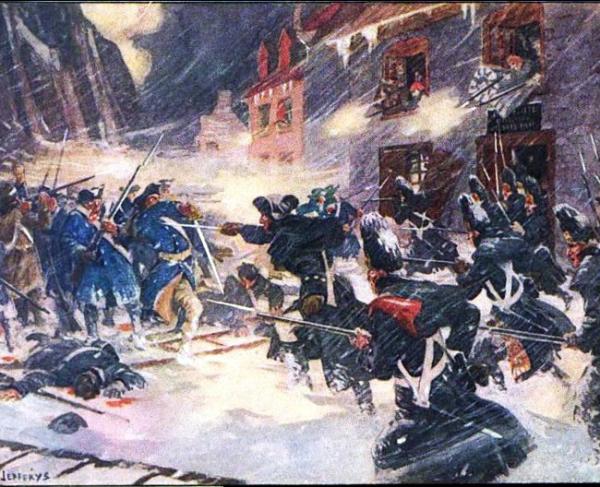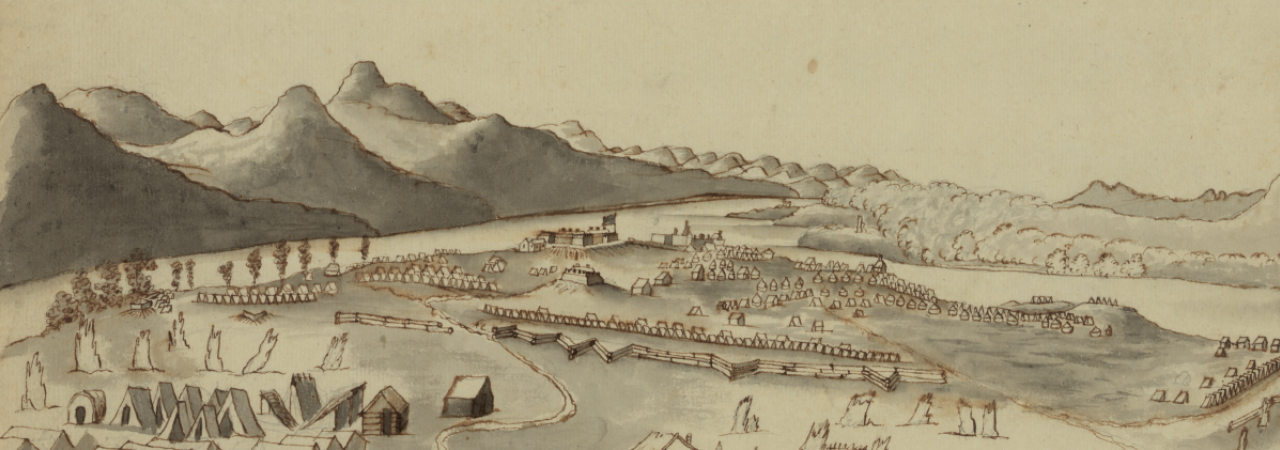
The history of Crown Point begins 21 years before the two more famous forts in the region, Fort Ticonderoga and Fort William Henry. While no great battles were ever fought at Crown Point, it played a role in some of the pivotal events of the French and Indian War and the Revolutionary War.
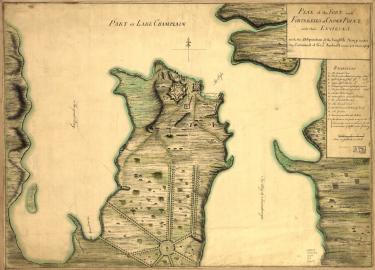
In 1734, the French constructed a fort at a strategic location on the shore of Lake Champlain. Fort Saint-Frédéric was built at a narrow point in the lake, where its cannons could block any unwanted movement along the water. The route from Lake George, to Lake Champlain, to the Richelieu River was one of the few possible avenues for a British invasion of New France, and Fort Saint-Frédéric was the colony’s first line of defense in the region. It also served as a base for raids against the British colonial frontiers.
In 1755, at the beginning of the French and Indian War, the British targeted Fort Saint-Frédéric. An army of colonial provincial soldiers commanded by Sir William Johnson marched north to attack the fort. On the southern shore of Lake George, Johnson’s army defeated an attack by a French force. After the battle, Johnson constructed Fort William Henry at the southern end of Lake George, while the French built Fort Carillon at the place on the southern end of Lake Champlain that the Mohawk called Ticonderoga. Fort Carillon assumed Fort Saint-Frédéric’s role as the first line of defense and the launching point for French offensives.
In August 1759, the French were faced with a vastly superior British army advancing up the Lake Champlain valley. They chose to abandon and destroy Fort Saint-Frédéric, and retreat further into Canada. The British began construction of a new fort, called Fort Crown Point, which was at least one-third larger than Fort Saint-Frédéric had been. Fort Crown Point ultimately covered three and a half square miles, and it was intended to be the new center of British military power in the region.
However, in April 1773, Fort Crown Point was destroyed. A chimney fire in a barracks building spread to a nearby powder magazine, leading to an explosion that reduced the mighty fort to, in the words of engineer John Montresor, “an amazing useless mass of earth.” A court of inquiry was held to determine the cause of the fire, and testimony pointed the blame as Jane Ross, the wife of a soldier in the 26th Regiment of Foot, who had been boiling soap in the chimney where the fire started. Ross herself testified that such practices were common, and not prohibited by any orders. A tiny number of soldiers were to garrison the surviving buildings.
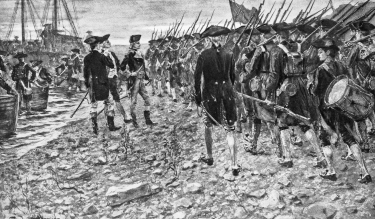
In May 1775, after Ethan Allen and Benedict Arnold led the Green Mountain Boys to seize Fort Ticonderoga, they sent Seth Warner and a small force to capture Crown Point. The British soldiers at the ruined fort numbered less than a dozen men, and they were quickly overwhelmed and taken prisoner. While the fort was in ruins, it still housed a large number of military supplies, including artillery. Some of the cannons in the “noble train of artillery” that Henry Knox took to Boston were taken from Crown Point.
After the failure of the American invasion of Canada in the winter of 1775-1776, the weary and battered American army retreated to Crown Point, but General Horatio Gates decided to withdraw further south to Fort Ticonderoga. When General George Washington wrote to Gates disapproving this move, Gates told the commander in chief that Crown Point was worthless as a defensive position: “the ramparts are tumbled down, the casemates are fallen, the barracks burnt, and the whole so perfect a ruin that it would take five times the number of our army, for several summers, to put it in defensible repair.”
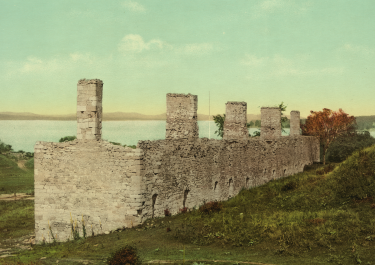
To try and stop the impending British invasion from Canada, Benedict Arnold began to construct a fleet of makeshift warships on Lake Champlain. To help build these vessels, the Americans established a sawmill at Crown Point and scoured the ruined fortress for any remaining cannons that could be used to arm the vessels. Arnold and his ragtag fleet would fight a crucial delaying action at the Battle of Valcour Island. After escaping the British fleet, Arnold and his men burned their surviving ships and retreated to Crown Point, where they burned the sawmill before falling back to Ticonderoga. The British army under Governor Guy Carleton occupied abandoned Crown Point in October of 1776, but the onset of winter forced Carleton to end his campaign and withdraw back to Canada.
Crown Point remained abandoned, with the American army making Fort Ticonderoga the centerpiece of their defenses on Lake Champlain. In 1777, when British General John Burgoyne’s army advanced south from Canada, they once again occupied the abandoned fort before beginning their siege of Ticonderoga. A small British garrison would remain at Crown Point until after the Battles of Saratoga, when the British withdrew back into Canada once more.
By 1783, the site of this once-formidable fortress was already a tourist destination. George Washington, traveling through the northern colonies while awaiting news of the peace treaty negotiations in Paris, visited Crown Point on July 21, 1783. This would be the furthest north that Washington would ever travel.
Further Reading
-
Crucible of War: The Seven Years' War and the Fate of Empire in British North America, 1754-1766 By: Fred Anderson
-
The French and Indian War: Deciding the Fate of North America By: Walter R. Borneman
Related Battles
1
48
18
5


